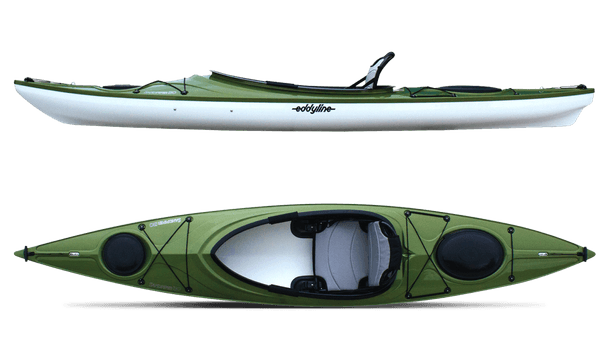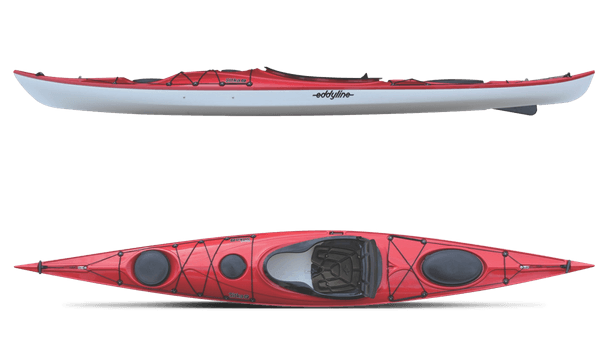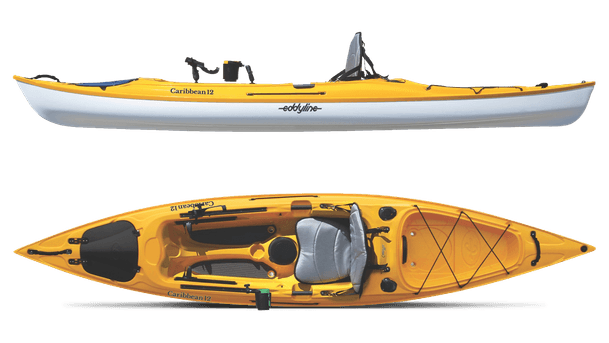- Home
- Gear & Reviews
- Raven
Raven

This Product Has Been Discontinued
More Kayaks from Eddyline Kayaks:
Raven Description
The Raven is a kayak brought to you by Eddyline Kayaks. Read Raven reviews or submit your own review to share with the paddling community. Check out a few other kayak recommendations below or explore all kayaks to find the perfect one for you!
Eddyline Kayaks
Raven Reviews
Read reviews for the Raven by Eddyline Kayaks as submitted by your fellow paddlers. All of the reviews are created and written by paddlers like you, so be sure to submit your own review and be part of the community!
If I had to choose only one kayak to own without question, it would be the Eddyline Raven.
In 2013, I purchased an Eddyline Raven. I'm a ACA L-3 coastal kayak instructor and I purchased the Raven with the sole intention of using it exclusively for conducting classes. For 4 years now it withstood the abuse an instructor’s kayak endures without any damage. After a just a few weeks of serving exclusively as a kayak for giving classes I realized the Raven potential and it quickly became my main kayak. I have no difficulty in performing any paddling skill in the Raven it serves equally well in every sea-kayaking environment, calm waters, large coastal swells and the surf zone.
It’s not only a day paddler’s dream kayak but it’s also capable of fulfilling multiple day kayak camping trips. Additionally because of its design the Raven is the first kayak were after a twenty-mile or more paddle I can stand upright like a normal human being. If I had to choose only one kayak to own without question, it would be the Eddyline Raven. Unfortunately, Eddyline Kayak discontinued manufacturing the Raven kayak I hope they bring this model back before I need to replace mine.
I would like to second…
The Raven would be very close…
This is a quick follow-up…
In short, I think the Raven is a very well designed hull that is fun and quick-ish. If Eddyline lowers the rear of the cockpit rim to allow a full layback, and does the few other deck changes that I think are needed (see my previous review), I'd give it a 10
This review of the Eddyline…
In brief, this is a very well built kayak (for the most part, as I will explain below). Finish is first-rate and almost flawless. The foot rails are mounted on internal bolts, which do not go through the hull and are not visible from the outside – gives a nice clean look. The cockpit is generously long – I am 6’4” with long legs (36”+ inseam) and large feet (US size 15) and even with the sliding seat a bit forward of center I could enter the kayak seat first without scraping my shins. Leg and foot room is excellent too – tall to average-sized people should be able to wear compact paddling shoes, and people with short legs would be able to wear just about anything.
The kayak is 55lb as outfitted (not the claimed 52lb). And it feels every ounce as heavy. While this is on the light side for plastic kayaks (the Nordkapp RM for instance is 10lb heavier), combined with the sharp edges on the inside of the cockpit, it makes for a somewhat uncomfortable package to handle off the water. On the water it is not a problem and the kayak feels lively and easy to paddle.
The backband is held raised up by two small plastic hooks glued to the underside of the cockpit rim. The idea is good, the execution on my kayak was not – the hooks fell off before I even had a chance to sit in the kayak for a first time (and good that they did, as I would surely had lost them otherwise). The reason – the very strong glue that Eddyline uses did not cover the hooks’ bases fully and being shiny, the rest of them did not stick to the glue. They just twisted off with hardly any effort at all – I noticed they were not secure as I was trying to adjust the back band on the floor before I sat in the kayak. Easy to fix, the glue is available in most hardware stores (check Eddyline’s web site for specifics – watch the repair videos too). The hooks attach to elastic loop on the backband (via plastic triangular pieces), and it appears they will keep the backband in place during remounts, while letting it slide down a bit if you need to layback while in the kayak. The backband is fine when properly adjusted, but it is thick and a bit stiff – comfortable when you need it, but does not get out of the way as easily as ideal when you don't. Also, adjusting it is not as easy and fool-proof as models with ratchets like the P&H Delphin for instance.
The seat is plastic with a thick removable seat pad. Comfortable for me with and without the pad. I usually paddle without cushions, so I removed it. The seat is sized for someone my size. Quite comfortable and well-shaped. There is no provision for adjustable hip braces for a tighter fit if desired (aftermarket or DIY can be easily added). The seat is adjustable fore and aft on a rail. Very easy, with a single wingnut on the front. It is fine for easy paddling, but with active edging the rear of the seat lifts-up and makes noises when the kayak is on edge. See my video here: http://youtu.be/q5VmP5gUkSU. The hip supports on the seat are also not attached to the hull, so they flex. The seat slipped back from its position when I was entering the kayak and was pushing a bit hard on the foot pegs. So the single wing nut on a smooth plastic-on-plastic rail is a bit under engineered for a kayak that is meant to be paddled actively. A second bolt can beaded to the rear of the seat with some care, but there is no space for a wing nut (only for a regular nut), and the bottom rail would need a short channel dremmeled-out to allow easy seat repositioning. Should be very easy to do for anyone handy with tools (even without tools – just a hot knife or screwdriver might do the channel in the plastic too.
The foot pegs are large and sturdy and well positioned (they are not mounted too low as is unfortunately the case in so many other kayaks). Contrary to some reviews, they can be adjusted fore and aft while seated in the boat quite easily – they can be pushed forward with your feet to the position you need, and if needed, can be pulled back with your toes, then locked in place with the lever by the knees. The foot pegs, however, are very sharp and hurt bare feet after only a few minutes of paddling: you need footwear and/or to glue 1/4" minicell foam on them for barefoot use (again, I tend to do the latter to most of my kayaks, so easy to do and not a big deal).
The rear deck is reasonably low, however, the rear of the cockpit rim is too high for comfortable laybacks. Even with the seat forward of center, the rear cockpit rim is in the way even for a tall person like me – while I can lay back, I feel pressure from the cockpit rim and have to lift my butt off the seat. And if I was doing it without a PFD, I would not be able to lay flat on the rear deck. I do not understand why Eddyline did not recess the rear of the cockpit rim an inch lower – would have been perfect. The actual height from the bottom of the kayak to the top of the cockpit rim in the rear is 8.7" (a touch over 8.5"). The center of the seat is raised about 3/4 of an inch, but that is still not enough to compensate and allow an effortless layback for rolling or relaxing on the water. A less flexible lower back will not allow a paddler to do it without lifting off the seat substantially.
The kayak rolls easy, but a static brace was not as effortless as it is for me in lower volume kayaks: when on its side it floats high, making a static brace more demanding. In comparison, in a WS Zephyr 155 or Tempest 165 the deck is lower and above-water volume is lower – much easier to balance brace and do layback rolls and hand rolls. Again, not an issue for combat rolling, but this is not a Greenland rolling machine (it is similar to the P&H Delphine in this regards, perhaps easier to complete the first half of the roll, from completely under to half-way up: the Delphin's flat deck make it a bit harder to initiate a roll).
The hatches are recessed as is the cockpit rim. This is good, but there are no channels for the water to flow out from the recessed areas – so you are always carrying a few cups of water on the deck in these areas. Not a big deal and I imagine the deck/kayak is a bit stronger and stiffer for that.
And the hull is stiff enough. Even the expansive flat areas under the cockpit are stiff enough – very little give under pressure by hand and none on the water that I noticed. Compared to Hurricane Tracer’s or Perception Sonoma's thermoformed materials, the hull and the deck on the Eddyline Raven are much stiffer and sturdier – no complaints at all. But to achieve that, the Raven weighs about 10lb more than a comparably sized Tracer.
The carry handles are attached with rope and have no provision to retract when not in use. There are small depressions in the deck for them to stay, but they will come off and dangle on the water and during transport on your roof rack. A modification would be needed to add some bungee to retract them when not in use, like many other manufacturers are doing.
The cockpit rim is similar to composite builds – fairly thin. This means a spray skirt is a bit harder to remove, so practice with one hand to make sure you can do it – especially shorter people might have trouble reaching forward of the long cockpit to release a tight the spray skirt easily with one hand. The inside of the rim near one of the thigh braces on my kayak had a fairly thin and sharp edge, which managed to take a bit of skin off two of my fingers while I carried the kayak to my car – make sure yours is sanded well and if needed, round it with a bit of sand paper or a small rasp.
The hatches close and open fairly easy and are water tight. The rear day hatch could be a bit hard to close well on the water – requires a bit of extra positioning/pushing that is not entirely effortless to do with one hand on the water. The front day hatch is useful for a snack and a small camera, but too small for anything else – can't fit a water bottle or two, which is a pity. The rear hatch is the same size as the front hatch and both are round – bulkier/longer items might not fit through them, so consider that if you intend to pack a tent or 2-piece paddle in the rear or front – you might not be able to put large items through these openings.
The deck rigging is a bit sparse, but functional enough. The first bungee in front of the cockpit is far enough ahead to not scrape my thumbs while paddling.
The foredeck, while allowing ample leg and foot room, is not too high and does not interfere too much with your paddle stroke. Still, cutouts for the paddle to enter closer to the boat would be welcome to add in a future version of the kayak – there is no good reason not to have them and they make paddling a lot more ergonomic: cutouts should be part of any kayak that has pretenses to be efficient to paddle.
The kayak tracks fine, though it is on the more maneuverable end of the spectrum. The Raven turns easy and tight with some edging, the ends releasing nicely on flat water edged turns even with my 200lb weight in it. While it turns easy, it is also very easy to keep straight – it is not demanding of the paddler to have a perfectly balanced stroke technique. Turns begin quickly and can be stopped quickly (unlike some kayaks that, once they start turning, demand a lot of effort to reverse the turn). There is some weathercocking in wind as expected (not much and easier to correct than on some other kayaks). A partial skeg application can trim the Raven neutral and a full skeg lets you leekock and go downwind easily. The skeg is very smooth and easy to operate, is quiet in the water (does not knock side to side, does not vibrate at speed), and does not seem to cause any noticeable added drag when deployed. My skeg behaved like a non-kink design – it would retract fairly easy if pushed-in (that might not be true after some months of use, can’t tell, but when new it was easy to operate and easy to push-in, so it would get damaged if you hit something underwater with it).
The Raven paddled very agreeably in any direction relative to winds and waves. Add skeg as needed to make it neutral and go where you want it without any effort to correct. Or keep the skeg up and paddle it actively and zig-zag your way down the wave faces in following seas. With a good inside edge when surfing following seas, the rear releases and you can link runs across several waves nicely. Bow rudders did not work so well for me compared to some other kayaks that like to turn from the bow when asked – the bow is better planted than the stern in the Raven and requires a good edge to release enough to let you pull it sideways with a bow rudder.
The Raven is a relatively dry ride, though the front hatch can throw some spray towards the cockpit occasionally (water does not flow smoothly over it and the bungee near it like it does in some other kayaks with similarly recessed hatches).
The thigh braces are a bit too low for my liking and a bit too close together to allow good knees together paddling. Being low means long-legged people like me will have to have fairly straight legged position (with low knees), which requires some hamstring flexibility to be comfortable. A half inch higher would have been better. Removing the seat cushion helped enough for me to let me get used to it, but a bit more height there would be nice, given how roomy the cockpit is otherwise. Since the thigh braces are not adjustable, they should be positioned higher and let the paddler pad them if desired. Also, I think they are a bit too far forward in the cockpit than ideal – the seat has to be in the forward position to have the braces be in the right place for even a tall person (and a shorter legged person would find their knees there, not their thighs).
Stability is very good (not huge, but well defined) – intermediate and experienced paddlers will have no issues with it. Beginners might feel a bit wobbly in the centered position, as the kayak is very willing to make tiny movements off-center. But even a small edge, and it immediately begins to firm-up. There is enough stability when flat and when put on edge to quickly inspire confidence in aspiring beginners who want to move up from a recreational kayak and are willing to put a few hours to get familiar with the Raven's stability profile. The primary and secondary stability are a very good thing to have in bumpier waters – you don’t have to think about stability, just paddle and the kayak will ignore and not punish small balance mistakes. On the other hand, the wide flat bottom and strong primary stability mean that the kayak is a bit bouncy compared to more round-bottomed designs (you need to keep lose hips and let it move under you with the waves – it is more affected by small steep wind waves and chop than kayaks like the Nordkapp RM). While the stability is good, it is not hard to edge and keeps on edge nicely.
The full ends mean it does not nose dive much, but (combined with relatively light-weight ends) also means that it will bounce up and down more actively across small bumps than a pinched-ends design. On the other hand, over larger bumps, the Raven will lift/will dive less than pinched-ends designs, and splash less when going over steep waves.
The Raven feels efficient to paddle and does not hit a wall as noticeably and early as some other playful designs like the WS Zephyr or Romany do. On the other hand, being fairly wide and square-ish for a good part of its underwater area means it is not as fast as slimmer and more rounded kayaks in terms of top speed and keeping it there. The Raven is a very good blend of decent speed and above average maneuverability and playfulness. I would not confuse it, however, with a true playboat like the P&H Delphin, nor will I mistake it for a slim and fast cruiser. But it "gets it right" in more areas at the same time than many other kayaks (that may excel in one area at the expense of another). A very well-rounded kayak on the more playful and maneuverable spectrum (and not exceptionally great in any one area).
The Raven has very little rocker – so it is fairly efficient to paddle. Unfortunately, this (combined with the full ends on the hull) also means that in short wind chop it will not “fit” nicely between waves like kayaks such as the Nordkapp RM and LV do – it jumps about a bit more, is a bouncier ride, and sits higher in the water at all times. This is fine when I paddle actively and want to play, but on a long crossing in choppy water I prefer the calmer and smoother behavior of a slimmer, lower profile, and more rockered boat.
In conclusion, if the rear cockpit rim was low enough to allow effortless layback rolls, if the thigh braces were closer to the seat and higher, if there were deck cutouts for a close and ergonomic paddle stroke, if the kayak was at least 5lb lighter, and if the bow was a bit more willing to turn, it would have remained in my fleet.
At full price $2,800 or so puts it in the ranks of some composite kayaks and well above rotomoulded kayaks, so it is a tough choice. The Eddyline material looks as good if not better than fiberglass/gel coat and appears to be fairly scratch resistant too. It will take more abuse in some ways than a composite boat, but it will crack just the same in other cases, so it won’t be a top choice for hard banging on rocks, where rotomulded poly boats still rule. At a sale price of just under $2K it is a much better buy and becomes a better option to consider.
Below is a paddling video in bumpy and windy conditions, and another video showing the seat movement. Finally, a link is provided to my post here on PNet with some discussion about the Raven (and more links for it).
Paddling video:
http://youtu.be/bX7050UPc9I
Seat movement video:
http://youtu.be/q5VmP5gUkSU
PNet post:
www.paddling.com/message/showThread.html?fid=advice&tid=1749234
I do not own this boat.…
Thermoformed plastic construction is what sets this boat apart from other playboats. While Eddyline isn't the only manufacturer out there today that manufactures kayaks this way, they are certainly the only ones making a boat like the Raven. As you'll read on the Eddyline website, the new material is about as strong as fiberglass, with a much more flexible quality. As a result, they can take impacts much better (this of course depends on the composite layup, some are better than others).
The Sea-Lect rigid hatch covers are nice, they come on and off with much less effort than the classic soft Kajak Sport covers. The deck bungees have a nice, soft sheathing. Deck lines are perhaps too tight and thin, though. The seat pan is very comfortable, and slides on a long track, giving the paddler an excellent option that Tahe neglects. Sea-Dog Line footpegs are sturdy and robust, however require you to lean forward for adjustment, unlike other modern designs.
Now for the important part: How does it paddle? My experience in this boat was all on calm water, so I cannot attest to its surfing or rough water capability. However its high volume bow, deep rocker and long, raked bow and stern lead me to believe that it would fare well. However most of my time in the Raven was spent doing boat control strokes and rolling. I paddled the Raven using a standard Greenland paddle and found that it was very agile. With simple edging, bow rudder, and stern rudder, the Raven and be turned 180*. The flat water handling of the 2013 Raven closely resembles that of a NDK Romany, the "end-all" in rough water kayaks. Having always wanted a Romany myself, I've taken every opportunity to paddle one. The main difference in handling characteristics between the two boats is the Raven's semi-hard chine. The Raven carves well on edge, and will easily carve the other way, following its deep rocker when edged to the extreme. When paddling the Romany, I found it had a tendency to always turn with the direction of the boat's rocker, perhaps due to its hull's subdued lines.
Rolling this boat took adjustment for me, as I was coming from my cheater boat, the Tahe Greenland T. The Raven takes more power in the knee and fuller sweep to right itself, but it rolls all the same. The back deck is lower enough for this paddler to consider it a "Greenland" design. I have no doubt that this boat would roll well in rough conditions. Having rolled a Romany (again, usually considered the end-all in rough water) I can say that rolling capability is about even between the two boats.
Overall I rate the Raven a 9/10. Having always lusted after the NDK Romany, my mind was changed after I paddled the Raven. Two very similar boats, the Raven beats the Romany in both Greenland sex appeal and construction.
This is a great boat. I've…
The decks is well laid out with three main hatches and a smaller hatch in front of the coaming for a phone, camera or other small item. The seat is new, with the backband low to match the low back deck, and comfortable once I got it dialed in. Interior storage is probably less than some fuller-bodied kayaks.
This is a boat for open water. Sort of like a Range Rover -- go anywhere, do anything, and do it in style. Build quality is exceptional, and its lines are, to my eye, very pretty. Gets admiring looks wherever I go.




